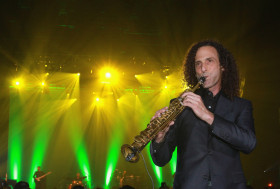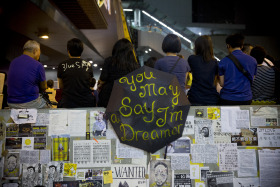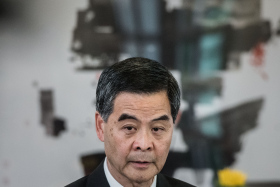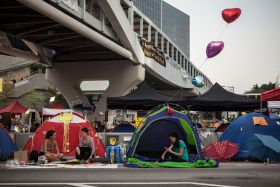
The famous saxophonist's visit prompted officials to reiterate their calls for foreigners to keep out of China's affairs
Kenny G is striking all the wrong notes in Hong Kong, the Chinese government says.
The Chinese foreign ministry has hinted that Kenny G, the American juggernaut of smooth jazz, might well be among the so-called “foreign influences” meddling in China’s affairs, after the top-selling saxophonist turned up at the main democracy protest site in Hong Kong’s Admiralty district, Reuters reports.
The city has been beset by protests for three weeks, with demonstrators furious over the tight restrictions China has put on local elections.
In photos making the rounds on social media, the curly-haired saxophonist is also seen making the peace sign at the barricades with patently delighted protesters.
But the tweet was apparently seen by Chinese officials not as a simple update on the musician’s whereabouts, but as an expression of support for Hong Kong’s protesters, who Beijing has resoundingly condemned.
“Kenny G’s musical works are widely popular in China, but China’s position on the illegal Occupy Central activities in Hong Kong is very clear,” Chinese foreign ministry spokeswoman Hua Chunying told a daily news briefing in Beijing.
“We hope that foreign governments and individuals speak and act cautiously and not support Occupy Central and other illegal activities in any form,” she said.
Hong Kong’s Chief Executive, Leung Chun-ying, has alleged that “foreign influence” is involved in the massive challenge to his government that the protests pose, but has declined to name such influence until the “appropriate time.” He has never mentioned saxophonists as possible meddlers.
Interestingly, one of the artist’s songs, “Going Home,” is universally used in China at malls and events to gently let people know that it’s closing time and that they have to leave. Conspiracy theorists might see a hidden message for the protesters here.




